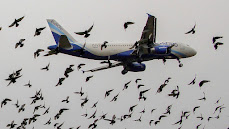Why airplanes are a threat to migratory birds of the Atlantic Ocean
Every year, billions of birds migrate across the Atlantic Ocean. These migrations are important for the survival of birds because they allow them to find food and breeding grounds. However, airplanes pose a growing threat to these migrations.
How airplanes threaten birds:
Airplanes pose a number of threats to birds. One of the threats is collision. Birds can be struck by aircraft, which can kill or injure them. Another threat is noise. Aircraft noise can be deafening to birds and it can disrupt their ability to navigate and communicate. Finally, aircraft emissions can pollute air and water, which can harm birds and their food sources.
What can be done to prevent bird deaths on airplanes?
There are a number of things that can be done to prevent bird deaths on airplanes. One is to reduce the number of flights over areas where birds are known to migrate. Another is to change the flight path of airplanes so that they avoid bird migration sites. Finally, the technology can be used to detect birds and alert pilots to their presence.
Radar:
Radar is a technology that can be used to detect birds. Radar works by sending out a pulse of radio waves and then listening for the echo that comes back. When the echo returns, it can be used to determine the location, size, and speed of the object that reflected the radio waves.
Expert opinion:
Experts agree that airplanes are a threat to migratory birds. However, there is some disagreement about the best way to prevent bird deaths on airplanes. Some experts believe that the best way to prevent bird deaths is to reduce the number of flights that fly over areas where the birds are known to migrate. Other experts believe the best way to prevent bird deaths is to reroute planes to avoid bird migration sites. Other experts believe the best way to prevent bird deaths is to use technology to detect birds and alert pilots to their presence.
Airplanes are a threat to migratory birds of the Atlantic Ocean. There are many things that can be done to prevent bird deaths on airplanes, including reducing the number of flights, changing flight paths, and using technology to detect birds.




Comments
Post a Comment